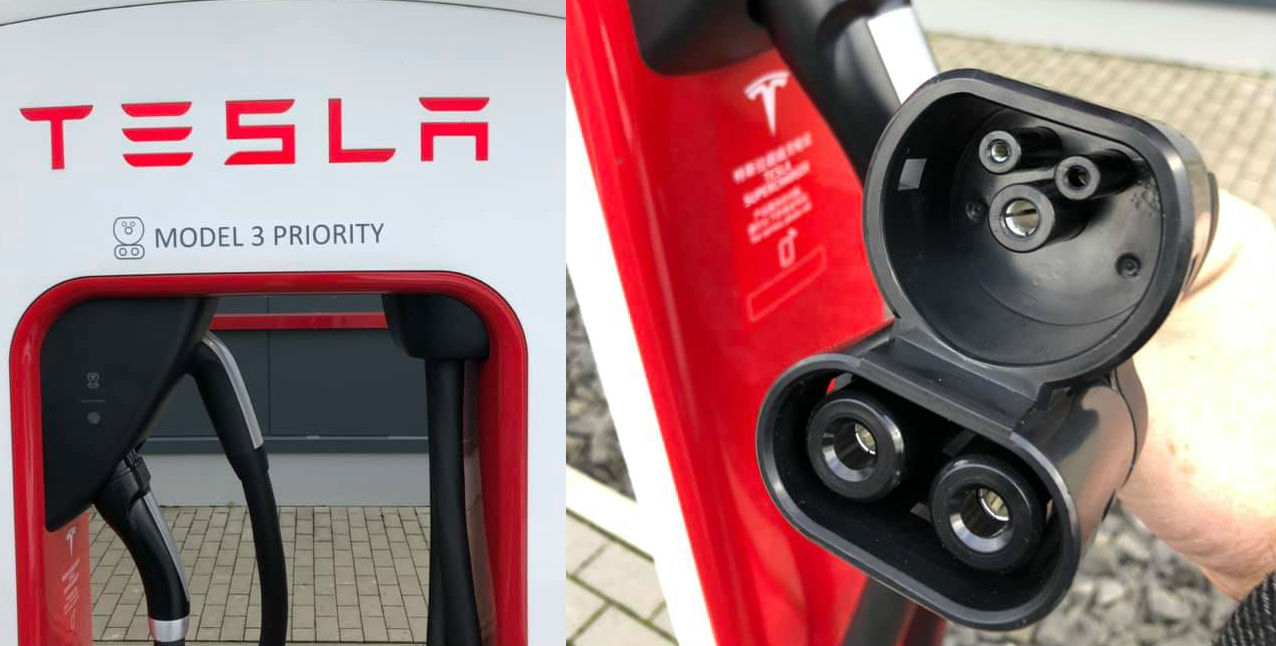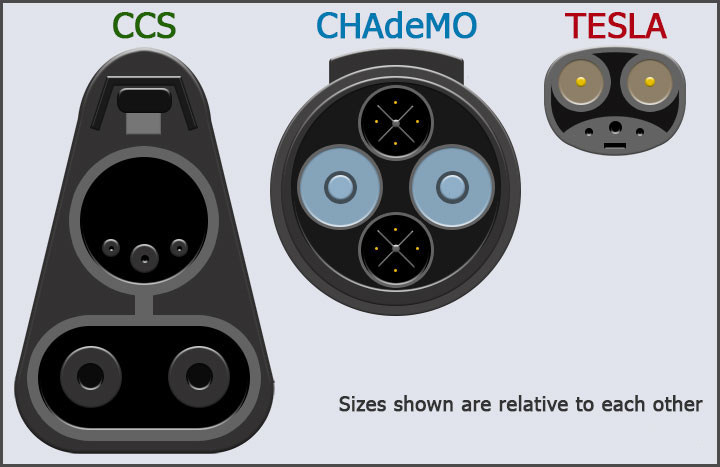CCS vs Tesla NACS? Something ahout EV Fast Charging.
CCS vs Tesla NACS?
Imagine you’re an automotive manufacturer trying to make the best car ever. Obviously, it’d be electric it has to be comfortable yet sporty, it has to have great cargo space yet still look great that vehicle might look something like porsche’s tycon. But, all accounts an incredible EV. However, when you compare it or any other EV like it to a tesla, you begin to see their massive achilles heel and that is the ccs port and by proxy electro America.
We’re going to be exploring charging infrastructure and talking about why tesla’s supercharging network might keep them a step ahead of the rest. If you’re newer to electric vehicles, you might be thinking how could a nationwide network of Ultra-fast chargers be an achilles heel don’t we need these to enable long-distance road trips and get back and forth across the country. Obviously, you’re right, we do need infrastructure but in my experience of driving electric vehicles coast to coast and anyone who’s experienced driving multiple different electric vehicles can tell you there’s a major difference between driving a tesla and using tesla’s supercharging network, and using Ultra America to get across the country and it all comes down to accessibility speed and reliability.
In the US, we effectively have a case of apple versus android at least for now, other EVs can’t charge on tesla’s network and in the inverse teslas can’t charge on the ccs network. Being the first to bring a fast charging EV to market tesla designed on their own proprietary connector with tesla. There’s just one form factor for both slow and fast charging it’s small lightweight and really easy to use just plug in and go. But, this thick boy a ccs port with a j1772 kind of port on the top and two high power connectors on the bottom. It might seem like a small detail to someone, but in practice tesla’s cable is about 10 times easier to plug in, that’s just the port design.
Something about EV fast charging.
First, you’ve got to find the chargers many non-tesla EVs make it difficult to find details about high powered chargers in the first place. For example, if I wanted to go to this Electrify America station two miles away, I can’t quite see how many chargers they have and how many are currently available as a result. I’m often looking at my phone to determine where to charge with other apps like plug chair or this one a better route planner, however once you’ve located a ccs charger such as this Electrified America you could still face a myriad of issues.
And then, you’ve got to look to plug into the fastest stall for your vehicle without blocking someone. Else most vehicles today charge at about 150 kilowatts peak but some charge at 350 kilowatts, if you plug 150 kilowatt car into a 350 kilowatt station, you’re blocking the faster cars from charging at their highest speeds.
As an Electrified America user, you still have one important thing to consider, that’s this CHAdeMo port which is great if you own a Nissan Leaf. But terrible, if someone’s already plugged into this ccs port, you see Electrified America has only one of these at any given station and if someone plugs into the ccs port here, before plugging into any of the other ones the Nissan Leaf user is out of luck.
Let’s say you’ve finally plugged in this area, where we found more problems, arise let’s say you’ve got one of the best new EVs that came with plug and charge currently, it’s only available in the Porsche Tycon in the Mustang Maki and the Lucid Air and you’ve gone ahead and activated it within the app well. This is gonna sound weird but there’s a chance you shouldn’t have it turns out if you plan to charge on Electrify America more than twice a month, you should be signed up for Electrify America’s pass plus a membership program that cuts the cost of each charge session by 25%.
The problem though with Electrify America you can’t have both the member rates and plug-in charge turned on at the same time so you either get the peace of mind, that you can just plug in and go or you’ll need to deactivate plug and charge entirely and activate each charge session from your phone to ensure the cheapest charging.
I’m not trying to say that supercharging teslas is perfect, there’s still confusion between the 75 kilowatt urban superchargers the 150 kilowatt chargers and the 250 kilowatt chargers, but for the most part it’s mindless you just plug in your navigation where you want to go and the car will tell you.
If where you need to charge them for how long now in terms of reliability, tesla has 20 urban superchargers here at this location of Milpitas Electro America has four stalls, currently only two of those are operational on top of all, that when we participated in nbc’s charge across America we experienced many chargers, where one or both of the charge cables were providing slower than expected charge speeds, so we went out to Electrify America to learn more about what they’re doing to improve this experience.
Some issues ahout Electrify America charging station.
We had some not so great experiences during charge across America, sometimes fortunately your network covers almost all the country and the places, that we traveled. On Electrify America charger station, we had some issues out there. Why someone might experience a D-rated session or even an anomaly where the session isn’t functioning properly at all.
we are constantly monitoring the network so we have a network operations center that’s staffed 247, that consists of about 30 engineers that are just on different shifts monitoring, every session on the network and looking for failure points looking for sessions that might be stopped or in this situation derated, so the derating that you have experienced at a couple of sites is affecting select locations and it’s actually a challenge with the the cables are the liquid cool cables which we have rolled out.
You know thousands of them across the country and that’s an industry wide issue with a sensor within the cable that needs to be replaced and so what the chargers do. When they sense that there might be something wrong with a temperature sensor in the cable, that they go into a derated state and we have all the diagnostic capabilities in the back end of our network to identify which cables they are and we have affected a campaign to make sure. That we’re either changing out that sensor or changing out that cable to make sure that no one needs to experience D-rated sessions.
That’s cool, because it’s definitely something that towards the end of our trip ironically over more on the west coast. I did start to see some new cables sometimes one cable was replaced on one side and the other one wasn’t do both cables have to be replaced to fix that problem or it’s only affects select cables so you know when we know of the issue we have a campaign active that’s rolling out. Right now to resolve what kind of redundancy is Electrified America like you know having the two cables for example or within the cabinets, what kind of redundancy is Electrified America thinking about and you know problem solving. I’ve even seen some batteries start to get installed at some locations in case. the grid’s down I don’t know so fundamentals are the model of how we roll outside.
So, on highway sides we’re on average about 70 miles apart across the country and then we’re obviously in much higher, density our locations are much closer together and higher density in metro areas as well, so there’s even a level of redundancy there that we’re building into the network from a location standpoint. So that if there was an issue with one particular site but there’s another Electrify America site within close proximity at the site level we have sites like in valley fair in silicon valley, they go up to 14 stalls and we’re planning even bigger sites from there as well. so, redundancy is obviously important at a site level so that you have multiple charges available also in the case of that there are other people waiting to use those charges as well which we’re seeing more and more on the network these days. And then, when within each charger you know we have on the models that you see behind you here we have two cables that adds a level of redundancy.
Of course, I think what you’re referring to it within the charging system itself, we have our power modules that convert ac power to dc, and those are also there’s numerous in each power cabinet. So we have a level of redundancy built into the power, so if one of those fails the charger keeps working you know if I was supposed to get 150 kilowatts one fails now I’m getting 100 and something that’s how they’re architected correct.
Get some charger adapter to your travel.
Absolutely, I recognize through this blog I’ve talked a lot about how Electrify America could be better but the good news is they’re working to improve their network with faster chargers built in redundancy with their cables and with backup batteries and by increasing the density of chargers. Additionally, ccs is a universal plug so there are plenty of other providers growing their own networks on top of that tesla’s currently piloting a program in Europe to allow other EVs to charge on their network. Probably, they’ll come to the us with some kind of adapter in the future.

